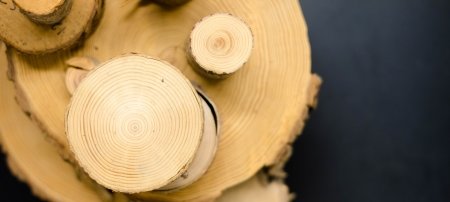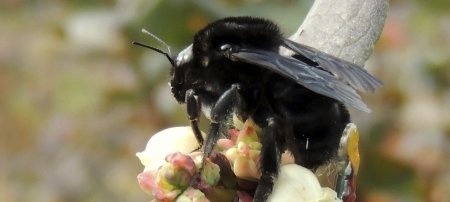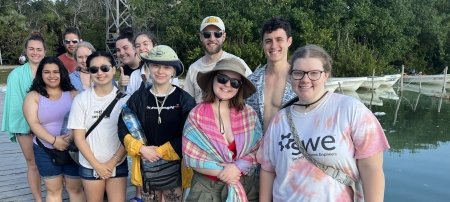Birds Abroad: How Oil Palm Affects Habitat in Mexico

A bird’s home is bigger than its nest. Across the Americas, birds and their home habitat reveal much about the health of other species, the health of ecosystems and perhaps even the socio-economic well being of local human communities.
In the world of forest bioenergy—growing crops to use for fuel, heat and other energy—this understanding of bird communities is especially important. That’s why David Flaspohler, a professor of ornithology at Michigan Technological University, is heading down to Mexico.

From late January through early March, Flaspohler will be at the Universidad Autonoma de Yucatan in Merida and visiting several field sites near Villahermosa, Tabasco. Flaspohler’s work is part of a bigger Partnerships in International Research and Education (PIRE) project funded by the National Science Foundation (NSF).
PIRE Collaboration
The forest bioenergy PIRE work spans six countries, dozens of field sites and more than 100 researchers. The core of the project looks at how land use affects different socioeconomic and environmental factors when growing and harvesting bioenergy feedstocks from oil palm, eucalyptus, jatropha, aspen and other trees.
“Forest-related bioenergy projects are increasing around the world, and scientists and policy makers have made many different assertions about their positive outcomes and negative impacts,” says Kathy Halvorsen, a professor of natural resource policy at Michigan Tech and the lead organizer for the PIRE project. She points out that many of these assertions oversimplify bioenergy sources and uses. “Our expectation is that the specific types and quantities of impacts will vary by social and ecological landscape, but will also have some commonalities.”

Often, global and national forces are at play, such as world oil prices. However, local communities often feel the impact the most. For example, growing oil palm for energy is strongly driven by global markets as well as national and regional policies, but the communities directly affected by oil palm plantations in Latin America tend to be small. In turn, local decisions about forest clearing, agricultural practices and livelihoods collectively shape how lands are managed worldwide.
As part of the PIRE team, Flaspohler gives a bird’s eye view on bioenergy habitats in the Americas.
Birds Indicate Biodiversity
Birds are exceptional biodiversity barometers. They are the most diverse vertebrates on land, living in almost every natural and human landscape on the planet, and because of that, they are fairly conspicuous creatures. Being highly mobile also makes them more responsive to landscape changes.


“The composition of bird communities and relative abundance of different bird species tells us much about the quality of different habitats and the usefulness of such habitats,” Flaspohler says. In the oil palm plantations in Mexico where he is doing fieldwork, he’ll be keeping an eye out for many bird species, including Aplomado falcons and vermillion flycatchers.
Maintaining habitat for local birds can happen even in forests planted to provide a commodity like oil palm or timber. Doing so is important, because birds and diverse ecosystems benefit people. These benefits include pollinating crops, controlling agricultural or human health pests, and storing and purifying water. Worldwide, these ecosystem services total in the billions of dollars.
“Yet most land use change occurs with little understanding of the consequences for ecosystem services or local communities that may depend on them,” Flaspohler says.
Biofuels and Bioenergy
People have altered landscapes since the first humans used fire to modify plant and wildlife communities. Extending into modern agriculture now, humans continue to actively transform one type of land cover into another to produce commodities such as food, fiber or even fuel.
“Some species of birds are highly adaptable to these changes, and others are not,” says Jessie Knowlton, a research scientist at Michigan Tech and a fellow PIRE collaborator, adding that whether a bird is a generalist or specialist matters. “Diet generalists can switch food sources when needed, and often take advantage of human-induced changes in the landscape, such as eating crops or scavenging on roadkill.”
Other birds are more sensitive. For example, some forest birds depend on a dense layer of vegetation at the ground or shrub level. If a forest is managed to reduce this vegetation, specialists like ant birds that follow army ant colonies in Brazil, will disappear.

Knowlton, Flaspohler and their team show in preliminary findings that large plantations have more habitat fragmentation, correlating with decreased biodiversity and bird mobility, particularly among habitat specialists. However, bioenergy crops are not all or nothing: in the PIRE surveys, smaller, patchwork-style plantations supported nearly as many species as native forests.
During his visit to Mexico over the next month, Flaspohler will continue collecting information to augment their datasets from Argentina, Brazil, and Wisconsin. He will tour several oil palm plantations, keeping an eye out for laughing falcons and vermillion flycatchers. While looking for birds abroad, Flaspohler hopes the work of the PIRE team can be used to inform and shape the management of landscapes that function both for humans and other species.
Michigan Technological University is an R1 public research university founded in 1885 in Houghton, and is home to nearly 7,500 students from more than 60 countries around the world. Consistently ranked among the best universities in the country for return on investment, Michigan's flagship technological university offers more than 120 undergraduate and graduate degree programs in science and technology, engineering, computing, forestry, business, health professions, humanities, mathematics, social sciences, and the arts. The rural campus is situated just miles from Lake Superior in Michigan's Upper Peninsula, offering year-round opportunities for outdoor adventure.




Comments